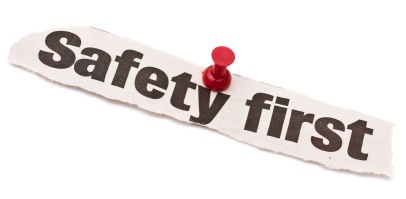Unless you’re James Bond, deciding to go to work each day (or night) is not generally expected to be a life-or-death decision. Even in our more dangerous occupations, we want the odds to be on our side. A major reason for this in the USA is the Occupational Health and Safety Act, which created the Occupational Health and Safety Administration (OSHA). This lead to rules mandating Personal Protective Equipment, like hard hats, high visibility clothing, and safety glasses, not to mention safety footwear.
It wasn’t easy getting such a law. Companies were against government intervention, and states competed with each other to attract and retain manufacturing jobs by reducing the costs of doing business within their borders. Can you guess which President signed it into law? (Probably not the first one who pops into mind.)
In 1965, the Public Health Service published an influential report that outlined some of the recently discovered technological dangers, including chemicals linked to cancer. In 1966, President Johnson had Secretary of Labor Willard Wirtz develop a program to protect workers. Wirtz testified in Congress that each year 14,500 workers died, 2 million were disabled, and more than 7 million hurt as a result of industrial accidents, and that these numbers were steadily rising. However, legislation supporting his program was defeated because of industry opposition plus other issues like the Vietnam War and inner city problems deflecting attention away from worker safety. It wasn’t until the end of 1970 that President Nixon signed a bill creating OSHA as part of the Department of Labor. The same act also created the National Institute for Occupational Safety and Health (NIOSH), a research agency whose purpose is to determine the major types of hazards in the workplace and ways of controlling them.
The OSHA’s primary mission is “to assure so far as possible every working man and woman in the Nation safe and healthful working conditions.” OSHA’s statutory authority extends to most nongovernmental workplaces where there are employees. The agency must ensure that employers take any measures “reasonably necessary and appropriate” to protect workers’ long-term health and safety. Mandatory OSHA standards may thus include extensive requirements of protective equipment, employee training, and monitoring of dangerous job sites. Agency compliance efforts may entail unscheduled worksite inspections and extensive record-keeping requirements.
OSHA inspectors may impose sanctions and remedial measures on employers found in violation of promulgated standards. And in the event of “imminent” threats to worker safety or health, the agency may bypass its ordinary rule-making process and seek immediate injunctive relief in a federal district court. Many factors can influence how much an employer is to pay, such as the size of the business or previous violations. One violation can cost up to $70,000.
After first setting standards for worker safety, OSHA shifted its focus to worker health, setting standards to protect workers from the insidious effects of asbestos, cancer-causing chemicals, beryllium, lead, cotton dust, carbon monoxide, dyes, radiation, pesticides, exotic fuels, and other toxins. In setting such standards, OSHA’s jurisdiction has steadily expanded. The nature of workplace injuries has also changed, and OSHA has responded, for example, by setting new standards to alleviate repetitive stress disorders like carpal tunnel syndrome.
So whether or not you’re a James or Jenny (we made that up) Bond, Big Brother OSHA is looking out for the Working Man and Woman. And WorkingPerson.com is here to help both employees and employers with quality items at lowest prices.




